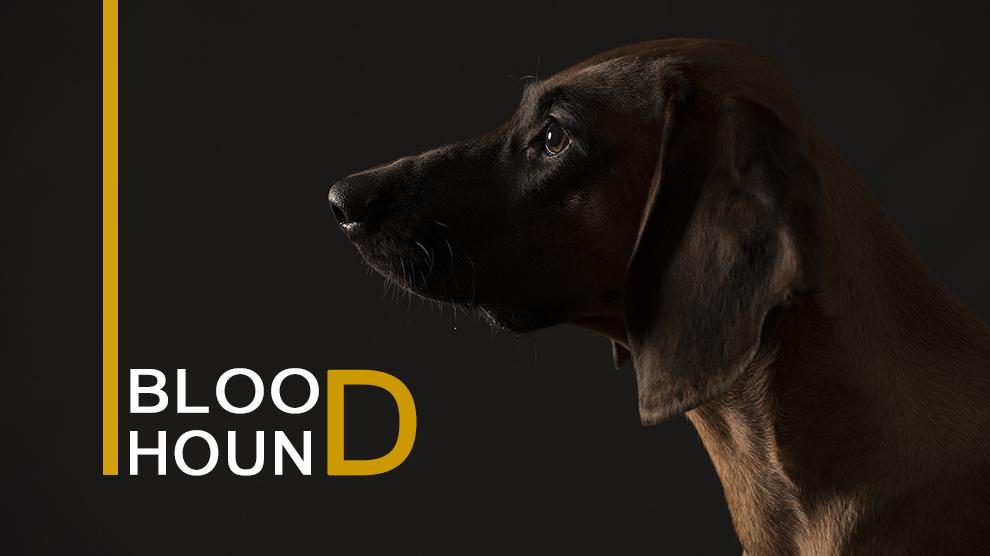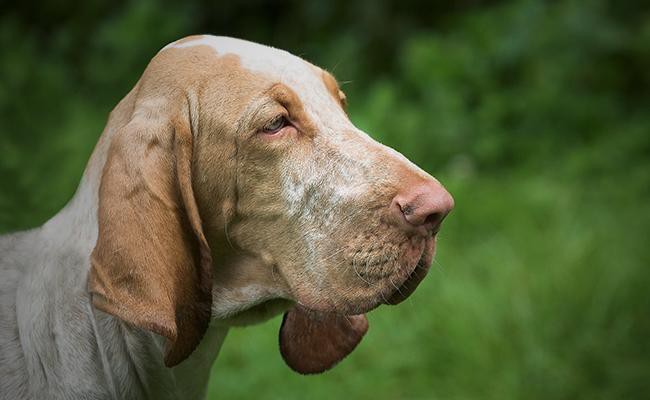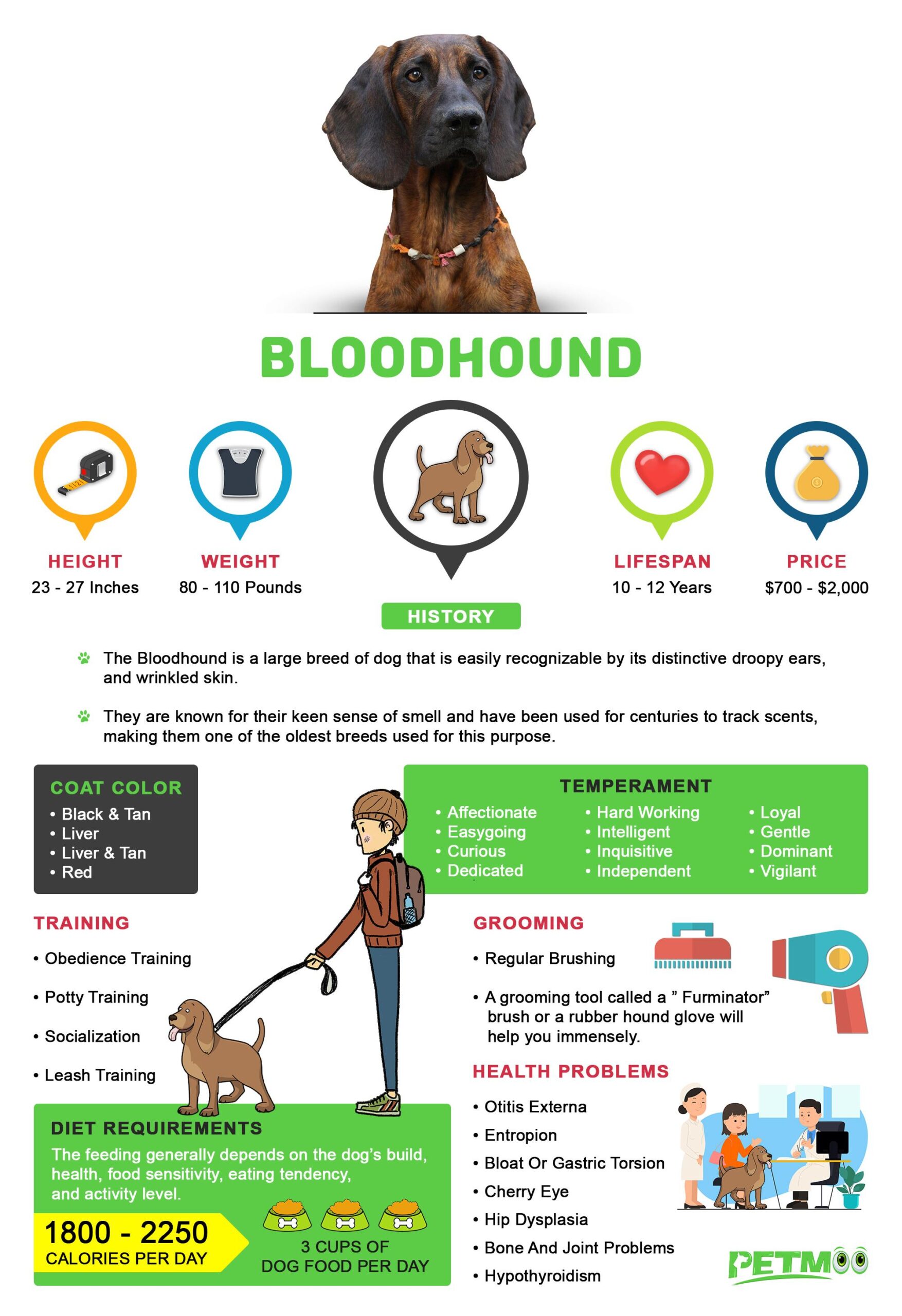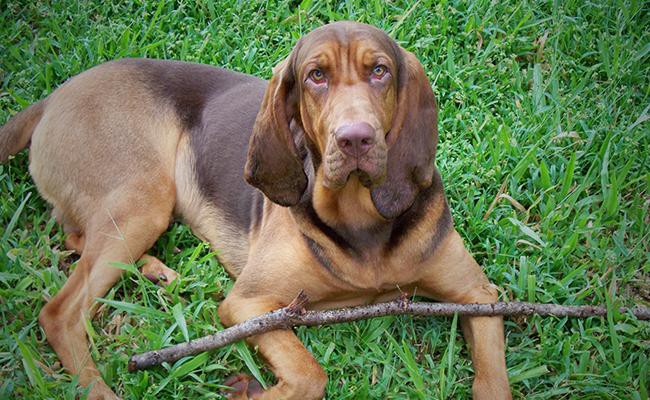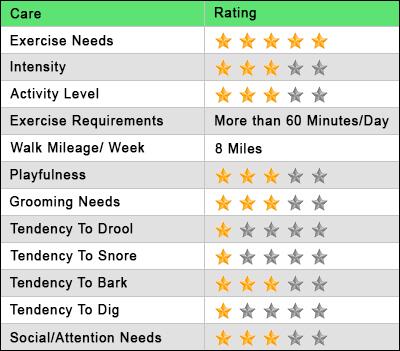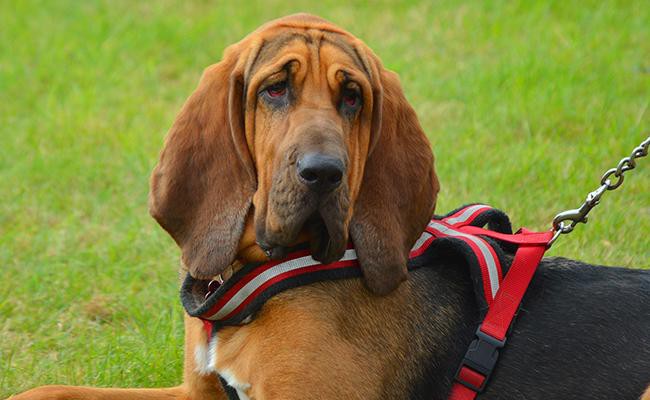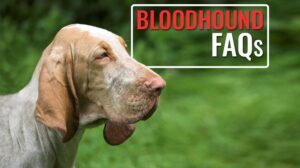Dog Pregnancy Calculator And Timeline
The Bloodhound is a large breed of dog that is easily recognizable by its distinctive droopy ears and wrinkled skin. They are known for their keen sense of smell and have been used for centuries to track scents, making them one of the oldest breeds used for this purpose.
Whilst Bloodhounds are definitely gentle, affectionate family dogs, they also have the perfect anatomy and innate skills to do what no other breed can when it comes to working.
He takes his name from his long lineage as a “blooded” hound, not due to the dog’s ability to track games and people, but from a long history of circumspectly recorded bloodlines.
How did he get to be so good at his job? That’s easy — he works like a dog – in fact, more of a dog.
Their phenomenal ability to read the terrain with the nose is mainly due to a great, ultrasensitive set of scent receptors that allows the dog to differentiate smells at least a thousand times better than humans.
When they are working, they are all business. The dogs will stick to a track for miles, so focused they sometimes run headlong into trees.
Bloodhound Breed Characteristics
- Origin: Belgium/ France
- Size: Large
- Dog Breed Group: Scenthounds (FCI, UKC)/ Hound (AKC, CKC, KC)
- Purebred: Yes
- Lifespan: 10-12 Years
- Height: Males 63 – 71 Cm(25 – 28 Inches), Females 58 – 66 Cm (23 – 26 Inches)
- Weight: Males 40 – 50 Kg(90-110 Lbs), Females 36 – 45 Kg (80-100 Lbs)
- Coat Appearance: Weatherproof Double Coat
- Coat Colors: Black & Tan, Liver, Liver & Tan
- Temperament: Affectionate, Easygoing, Curious, Dedicated, Hard Working, Intelligent, Inquisitive, Independent, Loyal, Keen, Resolute, Vigilant
- Good With Children: Yes
- Intelligence Level: High
- Good With Pets: Yes
- Hypoallergenic: No
- Grooming: Average
- Shedding: Average
- Barking: Barks When Necessary
- Suitable For Apartments: No
- Need For Exercise: High
- Easy To Train: No
- Good For First Time Owners: No
- Health Issues: Otitis Externa, Entropion, Bloat, Cherry Eye, Hip Dysplasia
- Litter Size: 8-10 Puppies
- Average Price: $800 – $1200 USD (USA), £1000 For KC Registered, £700 For Non-KC Registered
- Club Recognition: AKC Classification: Hound, UKC Classification: Scenthounds
Bloodhound History
The bloodhound is an old breed with obscure history and no one knows precisely where they came from.
Many canine historians believe the breed was well-known throughout the Mediterranean countries long before the Christian era.
It is thought that the first actual written description of what we know today as a bloodhound was in the 3rd century A.D. by Roman author Claudius Aelianus in his Historia Animalium. He described a dog that was unmatched for its scenting powers and willpower to stay on the trail until the quarry was traced.
Long before the Crusades, the Bloodhound made its appearance in Europe with the first specimens being brought from Constantinople. There were two strains, black and white.
The blacks were the renowned St. Hubert’s of the 8th century, bred by Belgium’s Saint-Hubert monastery monks.
There are several tales about Medieval Scotland’s brave hearts – William Wallace (1270–1305) and Robert the Bruce (in 1306) being tracked by ‘sleuth hounds’.
Be it true or not, these legends reveal that the bloodhound was already known as a man-trailer (as later it was known that the sleuth-hound and the Bloodhound were the same animals)
Is Bloodhound, The Right Dog For You?
If you want a dog who…
- Is massive, rugged, and powerful, with a houndy appearance (wrinkly skin, hanging jowls, and droopy ears)
- Has a short, sleek easy-care coat
- Has a solemn, dignified, kindly expression
- Loves the great outdoors and thrives on vigorous activities
- Looks imposing and serious and makes an effective deterrent, however, is generally mild-mannered
A Bloodhound may be right for you.
If you don’t want to deal with…
- A huge dog who takes up a lot of space in your house and car
- Destructiveness when not exercised enough or left alone too much
- Shyness toward strangers and Potential aggression toward other animals when not socialized enough
- Training and notorious housebreaking difficulties
- A distinctive “houndy” odor and LOUD baying
- Snorting, snuffling, wheezing, grunting, Drooling, and slobbering
A Bloodhound may not be right for you.
You May Be Interested In :
How Much Do Bloodhounds Weigh?
Bloodhounds are a large breed of dogs, with a height that typically ranges from 23 to 27 inches at the shoulder and a weight of 80 to 110 pounds. They have a muscular build and are surprisingly agile for their size. The breed is also known for its loose skin, which helps to trap scents and make it easier for the dog to track their prey.
Their size makes them an imposing presence, but they are gentle giants at heart who are great family pets.
Bloodhound Lifespan
The average lifespan of a Bloodhound is around 10 to 12 years. With proper care, some Bloodhounds have been known to live as long as 14 years.
Factors such as diet, exercise, and genetics can all play a role in a Bloodhound’s lifespan, so it’s important to provide them with the best possible care to help ensure a long and healthy life.
Regular veterinary check-ups and a healthy diet can also help to prevent or manage any health issues that Bloodhounds may be prone to, such as hip dysplasia and ear infections.
Bloodhound Coat Color
Bloodhound Coat Color
- Black & Tan
- Liver
- Liver & Tan
- Red
They have short, smooth coats and are extremely weather resistant. The accepted kennel club registration colors are black and tan, liver, red, and liver & tan.
Bloodhound Appearance
The Bloodhound is a large but not-so-hefty scent hound that stands over more ground than is usual with hounds of other breeds.
They are large and impressive-looking dogs that possess, to the greatest degree, every point and attribute of those dogs which hunt together by scent.
The skin hangs extremely loose (especially noticeable in the head and neck, where it hangs in deep folds) and looks as if there is enough extra skin for another dog to fit inside.
Bloodhound is rectangular and not square (stands over more ground), with more length in the ribcage rather than the loins.
Bloodhound Temperament
- As a member of the “scent hound” clan. They are ruled by their nose; inquisitiveness, curiosity, and exuberance.
- In the breed’s early years, these hounds lived as pack animals and worked independently of humans.
- The breed tends to be independent, impulsive, and determined. They have a strong sense of self and possess the ability to act on their own initiative.
- Primarily a one-man or family dog, Bloodhound may look hard-headed and stubborn but he is a sweet-natured dog that is loyal, gentle, and mild-mannered without being overly demonstrative.
- Bloodhounds are gentle with older kids and other animals, wanting only to take care of them.
- They are stubborn, independent, and can seem aloof; however, they bond naturally with those who care for them.
- These dogs have a genetic memory to run, roam and smell everything by working together with their humans in an inseparable unit.
For first-time owners
Bloodhounds aren’t generally a good choice for first-time owners. Their drive to sniff and their booming barks aren’t well-suited for intolerant owners.
Though the Bloodhound is an extremely affectionate breed, their dominant nature makes it crucial for owners to be the definite boss in their home.
They need to be handled and trained by people who are familiar with the Bloodhound basics.
In addition, they have strong minds of their own and would always be ready to test the boundaries and limits that were set for them by an owner.
But, given their ‘eager to please’ nature makes them a good choice for novice owners, provided they should have done their homework about the breed.
Bloodhound Traits
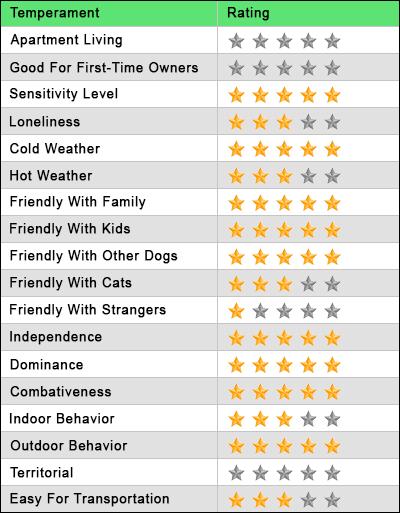
Bloodhound Training
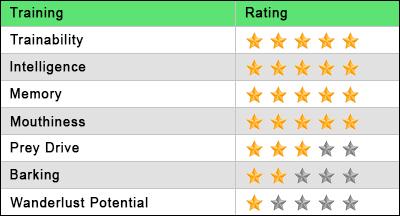
In the successful development of the first 2-3 years of a Bloodhound’s life, training can really make a difference. Still, it needs to be age-appropriate, particularly through the growth periods of a puppy.
On average, Bloodhound puppies put on 3-5 pounds/per week. The most important phase is the 4-8 month period, where the maximum growth happens.
Hound growth may continue for another year or two, but the 4-8 month period needs a little concern and care as the body begins to elongate (length) and the leg bones lengthen (height).
Remember that this breed is only a “puppy” for a few short months of their life, but a jumbo dog for 8+ years (hopefully).
So, visualize the behavior that you wish for in an adult Bloodhound, and set them up for adult life in puppyhood by training.
How To Train A Bloodhound?
Training a Bloodhound can be a rewarding experience, but it requires patience, consistency, and a good understanding of the breed’s unique temperament and needs. Here are some tips for training a Bloodhound:
- Start training early: Bloodhounds are intelligent dogs, but they can be stubborn and independent, so it’s important to start training them as early as possible. Begin with basic obedience commands such as sit, stay, come, and heel.
- Use positive reinforcement: Bloodhounds respond well to positive reinforcement, so use treats, praise, and affection to reward good behavior. Avoid using punishment or harsh training methods, as this can damage the bond between you and your dog.
- Be patient and consistent: Bloodhounds can be slow to learn and may require more repetition than some other breeds. Be patient and consistent with your training, and keep sessions short and focused to avoid boredom or frustration.
- Socialize your dog: Bloodhounds are naturally friendly and social dogs, but they can be shy or nervous if not properly socialized. Expose your dog to different people, animals, and environments from a young age to help them develop confidence and adaptability.
- Provide plenty of exercise: Bloodhounds are active dogs and require plenty of exercise to stay healthy and happy. Take your dog for daily walks or runs, and provide plenty of opportunities for play and exploration.
- Train your dog to follow their nose: Bloodhounds have an incredible sense of smell, and many of them enjoy using their noses to track scents. Consider enrolling your dog in a tracking or scent work class to develop their natural abilities.
- Consider professional training: If you’re having difficulty training your Bloodhound or want to teach them advanced skills or sports, consider hiring a professional dog trainer who specializes in the breed. They can provide guidance and support to help you and your dog succeed.
Bloodhound Care
It’s important to note that Bloodhounds have a tendency to gain weight easily, so it’s crucial to provide them with regular exercise and a healthy diet to help maintain their weight.
They are also prone to certain health issues, such as hip dysplasia and ear infections, so it’s important to keep up with regular veterinary check-ups to ensure that your Bloodhound is healthy and happy.
Bloodhound Diet
Calorie considerations: A typical, healthy bloodhound should be fed about 20-25 calories worth of food per pound of body weight.
– The average adult hound (weighing 90 lbs) should get anywhere around 2100-2250 calories per day (on average)
– A young dog weighing around 50-70 pounds (6-12 months pup) may require at least 1865 calories daily.
– For hounds with a more sedentary lifestyle or spayed/neutered dogs and for older dogs, they may need fewer calories – 2000 calories

Rough Feeding guide for hounds:
- Dog food cups per day- 3 cups (average)
- Daily cost: $2.00 – $2.25 (standard)
- Monthly cost: $60.00 – $67.50
The feeding generally depends on the dog’s build, health, food sensitivity, eating tendency, and activity level
- Pups between 2-3 months old – 3 meals every 24 hours (300g- 500g).
- 3 to 6 months old – 3 meals every 24-hour period (500-780g)
- Feed puppies 6 months to 10 months – 2 bowls of food daily (700g) reduce portions gradually
- feed puppy 10-15 months old – (700g-500g)
- After the 15th month, they can be fed adult dog food.
Dry dog food for adult dogs:
- Dogs weighing 40 kg = 400g-580g
- Dogs weighing 45 kg = 430-575g
- Dogs weighing 50-55 kg = 450g-650g
Bloodhound Grooming
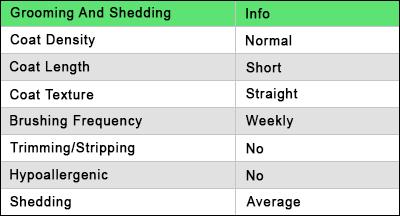
Bloodhounds have moderate grooming requirements and their shedding varies with individual hounds.
Their short, wrinkled, and fairly hard-in texture double coat must be brushed and combed regularly to keep it in good condition.
They “blow” their coats once or twice each year (spring, and autumn) — during that time, daily grooming will help to cut down the mess and speed up the process.
A grooming tool called a” Furminator” brush or a rubber hound glove will help you immensely. If possible, daily run a Furminator through your hound’s coat to help maintain the loose hair.
When you persist with the daily grooming, the weekly grooming will be relatively uneventful.
Bloodhound Puppies Names
Naming a Bloodhound can be a fun and personal process, and the name you choose should reflect your dog’s personality and individuality. Here are some tips to help you choose the perfect name for your Bloodhound:
- Consider their physical appearance
- Think about their breed
- Consider their personality
- Keep it short and easy to say
- Make it unique
Male Bloodhound Names
- Sherlock – meaning “fair-haired”.
- Hunter – meaning “one who hunts”.
- Marley – meaning “pleasant seaside meadow”.
- Diesel – meaning “strong and reliable”.
- Bruno – meaning “brown”.
- Finn – meaning “fair or white”.
- Bo – meaning “precious”.
- Axl – meaning “father of peace”.
- Samson – meaning “sun”.
- Duke – meaning “leader”.
- Bandit – meaning “thief”.
- Rusty – meaning “red-haired”.
- Rufus – meaning “red-haired”.
- Odin – meaning “god of war”.
- Jasper – meaning “treasurer”.
Female Bloodhound Names
- Bella – meaning “beautiful”.
- Sadie – meaning “princess”.
- Luna – meaning “moon”.
- Lulu – meaning “pearl”.
- Nellie – meaning “bright, shining one”.
- Rosie – meaning “rose”.
- Daisy – meaning “day’s eye”.
- Olive – meaning “symbol of peace”.
- Ginger – meaning “spice”.
- Coco – meaning “chocolate”.
- Ivy – meaning “faithfulness”.
- Roxy – meaning “dawn”.
- Molly – meaning “bitter”.
- Hazel – meaning “the hazelnut tree”.
- Sophie – meaning “wisdom”.
Recommended Read:
Bloodhound Health Problems
Major concerns:
1. Otitis Externa – This is an inflammation or infection of the epithelium (lining) of the external ear canal (outer ear infection).
Yeast, Bacteria, External parasites like ear mites, Polyps or other growths, allergies and foreign bodies in the ears, dirt, sand, or plant material (grass awns and foxtails) can all cause otitis externa.
2. Entropion – This is an abnormality in which a portion of the eyelid inverts or rolls inward and that causes the dog’s eyelashes to irritate or scrape across the eyeball repeatedly.
Over time, these scratches can cause scarring and even perforation, compromising your dog’s eyesight.
3. Bloat/Gastric Torsion – Bloat is perhaps the number one killer of bloodhounds, and the cause is still not well identified.
4. Cherry Eye – “prolapsed gland of nictitans” – The prolapsed third eyelid gland (nictitating membrane ) is visible as a pink mass or ‘lump’ near the inner corner of the eye and resembles a reddish cherry.
This may lead to chronic irritation of the cornea, dry eye (keratoconjunctivitis sicca or KCS), and conjunctiva.
5. Hip Dysplasia – The hip joint degenerates due to aging and the dog will become lame
Minor concerns:
- Bone and Joint Problems
- Hypothyroidism
Bloodhound Price
The price of a Bloodhound can vary greatly depending on several factors, including the breeder’s location, the dog’s age, and its quality. On average, Bloodhounds can cost anywhere from $500 to $2,500 or more.
It’s important to remember that purchasing a Bloodhound from a reputable breeder is an investment, and the extra cost is a reflection of the time, care, and resources the breeder has put into raising a healthy and well-socialized dog.
Bloodhound Breeders
Choosing a reputable breeder is an important step in finding a healthy and happy Bloodhound. Here are some tips to help you select a good breeder:
- Research different breeders and read their websites, reviews, and testimonials. You can also check the breeder’s membership with a breed club or kennel club.
- Ask for recommendations from friends, family, or local pet stores. You can also contact a breed club for a list of reputable breeders.
- Visit the breeder.
- A good breeder will be able to provide you with information about the bloodlines of their dogs, including any genetic health problems that may be present.
- Whenever possible, it’s a good idea to meet the parents of the puppies you are interested in.
- Health guarantees: A reputable breeder will provide a health guarantee for their puppies and will be happy to answer any questions you have about the puppies’ health and care.
- Price: While the cost of a Bloodhound from a reputable breeder may be higher than from a pet store or backyard breeder, it’s important to remember that you are investing in a healthy and well-cared-for dog.

Click here to find Bloodhound breeders in the USA.

